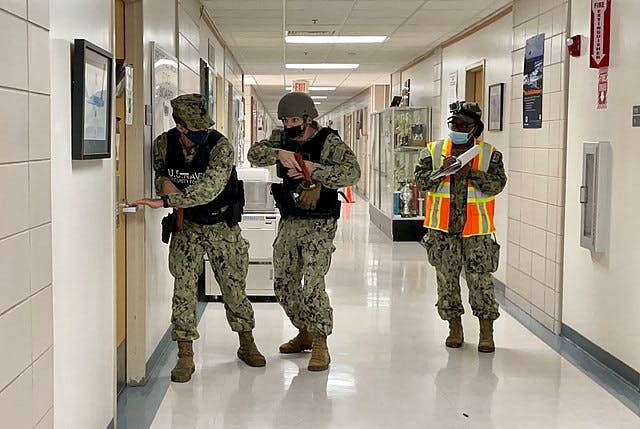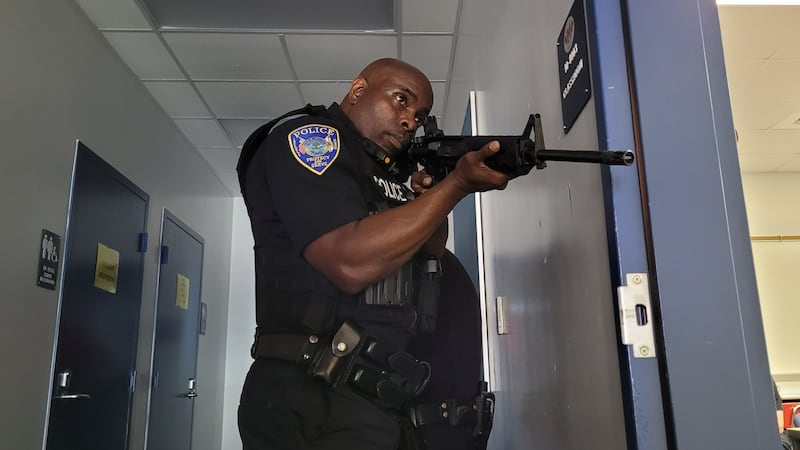Why Active Shooter Training Is Important for Office Safety And Security
Why Active Shooter Training Is Important for Office Safety And Security
Blog Article
Exploring the Key Parts and Purposes of Efficient Active Shooter Training Programs
Energetic shooter training programs are critical in gearing up people and companies with the needed skills to react effectively to potential threats. As we discover the ins and outs of these training programs, it ends up being obvious that comprehending their thorough nature is crucial to boosting security measures and feedback abilities.
Relevance of Active Shooter Training
Energetic shooter training programs are critical for boosting readiness and feedback when faced with possible hazards. These programs intend to gear up individuals, organizations, and communities with the expertise and abilities essential to efficiently react to energetic shooter scenarios. The raising frequency and severity of such incidents highlight the significance of proactive procedures, as prompt and informed feedbacks can considerably minimize harm.

In addition, these programs can help relieve the anxiety and concern that often accompany conversations concerning prospective threats. By giving structured advice and practical strategies, people gain confidence in their capacity to react properly. Inevitably, the relevance of active shooter training depends on its prospective to save lives, decrease injuries, and grow a ready and durable neighborhood efficient in encountering unexpected challenges.
Secret Parts of Training Programs
Reliable energetic shooter training programs usually include numerous key elements created to prepare individuals for real-world scenarios. The first part is thorough education on the nature of energetic shooter cases, consisting of statistics, instance research studies, and emotional factors that affect assailants. This academic foundation is essential for fostering awareness and understanding amongst individuals.
Next, programs frequently consist of training on individual safety steps, emphasizing the "Run, Hide, Fight" technique. Participants learn exactly how to examine their environment, make fast choices, and take ideal actions throughout a dilemma. In addition, the addition of reliable communication abilities is vital, as individuals should understand just how to report cases and share essential info with police.
Another essential part is the involvement of law enforcement or safety and security specialists, who give insights right into tactical responses and the importance of cooperation throughout a crisis. In addition, programs need to deal with the mental aftermath of an energetic shooter situation, providing strategies for dealing and recovery.
Last but not least, continuous training and correspondence course are essential to make sure that knowledge continues to be existing and participants really feel confident in their capabilities. With each other, these crucial components produce a well-shaped training program that outfits people to respond effectively to an energetic shooter occasion.
Realistic Scenario Simulations
Practical circumstance simulations are a crucial facet of active shooter training programs, providing participants with the opportunity to involve in hands-on technique that mirrors possible real-life circumstances. These simulations improve the training experience by creating an immersive setting where people can use academic expertise you can try here in functional setups.
With using role-playing, simulated situations, and specialized training centers, participants experience the instant difficulties and stress factors related to an active shooter occurrence. This approach of training advertises fast decision-making, teamwork, and the application of safety procedures under stress. It allows -responders to establish critical skills such as situational recognition, hazard assessment, and reliable evacuation treatments.
Moreover, practical simulations aid to identify prospective weak points in participants' actions, allowing instructors to supply targeted feedback and boost overall readiness. The consolidation of varying scenarios, consisting of different areas and attacker profiles, better improves the training experience, ensuring that individuals are well-appointed to manage a series of potential situations.
Inevitably, these simulations serve not just to instruct yet additionally to build self-confidence amongst individuals, fostering a feeling of preparedness that is essential for effective emergency situation action when faced with an active shooter hazard. active shooter training.
Communication Approaches in Training
Clear interaction is crucial in active shooter training programs, as it directly influences the efficiency of feedback efforts throughout a situation. Training individuals must comprehend the methods and treatments that will lead their activities if confronted with an active shooter situation. Establishing clear lines of interaction guarantees that all people entailed can communicate details quickly and accurately.

In addition, training programs need to highlight the significance of active listening - active shooter training. Participants should be educated to interpret and reply to information effectively, reducing misunderstandings that might bring about unsafe circumstances. Routine responses sessions post-training can also improve interaction techniques, ensuring that all individuals feel empowered to share their look at this site experiences and tips for renovation. Eventually, effective communication approaches are necessary for preparing people to react decisively and cohesively in the face of an active shooter occurrence.
Emotional Readiness Strategies
Emotional readiness strategies are increasingly acknowledged as necessary elements of active shooter training programs. These techniques intend to gear up people with the mental resilience necessary to respond successfully in high-stress situations. By promoting an attitude attuned to prospective risks, individuals can better manage concern, anxiousness, and confusion during essential occurrences.
Key emotional preparedness approaches include scenario-based training and tension vaccination workouts. Scenario-based training immerses participants in realistic simulations that imitate the chaos of an energetic shooter event, allowing them to practice decision-making under stress. This direct exposure assists build experience with emergency situation methods, enhancing natural actions.
Stress inoculation includes progressive direct exposure to stress-inducing circumstances, allowing individuals to create coping systems. This can include breathing workouts, visualization methods, and cognitive restructuring to reframe negative ideas. By integrating these strategies, training programs can grow a sense of confidence and control, which is crucial in crisis situations.
Moreover, post-incident emotional support is critical to deal with the emotional consequences of an energetic shooter event. Including psychological health and wellness sources right into training programs not just prepares people for prompt reactions but additionally advertises lasting mental health, ultimately adding to a much safer and much more resilient atmosphere.
Conclusion

Report this page